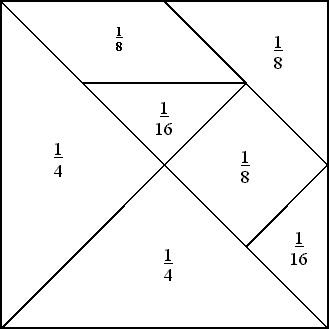A really cool software for my workshop, should not be complex, I would not think.
Basically, I make tangram puzzle pieces. Wooden ones for kids and grownups alike to play with. But there has to be an easier way to figure out the piece sizes.

What I would like to do is be able to input ONE number and all the pieces' side lengths are automatically calculated. So, I can make a tangram any size I want without having to take time to figure out the size of every single piece. If, say, I wanted to make the large square with a base of 10 inches, the program could figure all the lengths.
Here's the breakdown on size relationships, but the image shows it pretty well:
There are seven pieces to the puzzle, arranged in the image as shown to make a square: 5 triangles, 1 square and 1 parallelogram. The triangles are all isosceles, with 2 small ones, 1 middle size, and 2 large ones.
As you can see, the large triangles' hypotenuse is equal to one side of the whole square. The middle triangle's legs are 1/2 the length of the square. The small triangles' hypotenuse is 1/2 the length of the square. The small square's side is equal to 1/2 the middle triangle's hypotenuse, or the whole length of the small triangles' leg. The parallelogram's long side is equal to 1/2 the whole square's side, while the short side is equal to 1/2 of the hypotenuse of the middle triangle.
Is this doable?
Thanks!
Ron


